Yellow fever
English: Yellow fever
Synonyms: Ochropyra, Black Vomiting, Siamese Disease
introduction
Yellow fever is a mosquito-borne infectious disease. The virus that causes the disease is called the yellow fever virus.
The disease is usually characterized by fever, nausea and vomiting and can either go away on its own or, if it is more severe, lead to death if left untreated. The reasons for this are bleeding in the gastrointestinal tract and sudden liver and kidney failure as complications. Yellow fever is most common in sub-Saharan Africa and South America, which is why vaccination against yellow fever is requested before traveling to these areas.
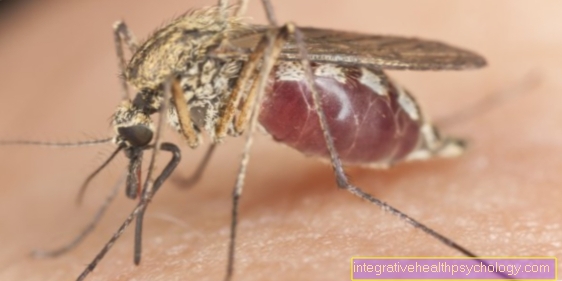
In which areas is there yellow fever?
Yellow fever occurs in Africa, South America, and Central America. Since the affected areas occur in the range of certain latitudes, one speaks of the so-called "yellow fever belt".
In Africa, the areas south of the Sahara, which are at the level of the equator, are particularly affected. Popular safari destinations in the yellow fever area are e.g. Kenya, Tanzania. The West African states on the Gulf of Guinea are particularly affected.
In South America, yellow fever is more common in the northern part of the continent: Brazil, Peru, Bolivia, Venezuela, Ecuador, and Colombia. Argentina and Chile are not affected.
Yellow fever is less common in Central America than in South America, mainly affecting the Caribbean island states: Cuba, Dominican Republic, Jamaica and Haiti.
Yellow fever can be distributed very differently from region to region in the various affected countries, so it makes sense to seek medical advice before you start your journey.
So far, no cases of yellow fever have been reported from Asia, although there are also the climatic conditions necessary for transmission there.
Which mosquitoes transmit yellow fever?
The yellow fever virus belongs to the flavivirus family and is mainly found in the tropical and subtropical zones of Africa and South America.
The disease used to only occur in Africa, but the slave trade also brought it to South America. The mosquito that transmits the yellow fever virus is also found in Asia, for example, but the disease does not occur there. There is no explanation for this phenomenon.
The yellow fever virus is transmitted from mosquitoes to humans through a mosquito bite. The only organisms in which the virus can survive are primates (humans and monkeys) as well as the mosquitoes themselves. According to statistics, around 200,000 people fall ill with yellow fever every year in the risk areas, 30,000 of which die. The illness must be reported by name in Germany.
There are two types of mosquitoes that both cause yellow fever: Aedes aegypti and jungle mosquitos (e.g. Aedes africanus in Africa and Haemogogus mosquitoes in America).
Jungle mosquitos can transmit the yellow fever virus through their sting to many different species of monkeys, which are the natural reservoir of the pathogen. But people who stay in the tropical rainforest can also be infected with yellow fever by jungle mosquitos.
If these infected people are later in more urban areas, the yellow fever virus can be ingested by the mosquito Aedes aegypti. This is because this mosquito breeds near human settlements. The mosquito Aedes aegypti is the carrier of the yellow fever virus from person to person, which is known as a "vector". The mosquito Aedes aegypti can cause large outbreaks of the disease in areas with many people who have not been vaccinated against yellow fever.
For general information see also: Infectious diseases
Yellow fever virus
The virus belongs to the flavivirus family (Latin flavus = yellow). These viruses have genetic material that consists of a single strand of RNA. What they have in common is that they are all transmitted by mosquitoes or ticks. The yellow fever virus infects immune defense cells, e.g. Scavenger cells and starts here with the reproduction of the genetic material.
You might also be interested in: What is the Ebola Virus?
How contagious is yellow fever?
Yellow fever is transmitted by mosquitoes of the genus Aedes. A direct infection from person to person is not possible.
But of course it is possible that you will also be infected with yellow fever in an area where the Aedes mosquito is common if there are patients with yellow fever in the immediate vicinity and you are aware of a mosquito that carries this virus. is stung.
You might also be interested in this topic: Inflammation of a mosquito bite
Prophylaxis and prognosis
Up to the age of 14, yellow fever has a very low mortality rate and, if it is noticed at all, resembles the course of the disease more like a normal flu. In adults, on the other hand, the mortality rate is significantly higher at 20-50%; the patients then die in the last phase of the disease from multiple organ failure. A survived infection probably offers lifelong protection against re-infection with yellow fever.
A yellow fever vaccination is used for prophylaxis. This was developed by a South African doctor around 1940 and offers reliable protection against infection with yellow fever. It is therefore urgently advisable to prepare or check the vaccination protection before each trip to possible yellow fever-contaminated areas (so-called yellow fever belt). The respective patient must be individually advised about possible side effects of a yellow fever vaccination, but the vaccination can also lead to a number of complications. These can range from flu-like symptoms to life-threatening vaccination reactions. However, these are very rare and should not generally discourage vaccination.
The yellow fever vaccination can be carried out in special centers by tropical medicine specialists. Many countries require proof of a yellow fever vaccination upon entry and therefore refuse entry if you are not adequately protected against yellow fever. Children must also be vaccinated against yellow fever, but the World Health Organization does not recommend it until they are 9 months old. Adequate protection against yellow fever is already in place 10 days after the vaccination. It is assumed that the yellow fever vaccination protects against infection for 30 years, but recommends a booster after 10 years to be on the safe side if you return to yellow fever areas. When vaccinating, yellow fever should not be confused with jaundice (hepatitis vaccination). In addition to the vaccination, the risk of infection can be minimized by wearing long clothing and applying mosquito repellent.
More on this: Mosquito repellent
vaccination
Vaccination is the best and most effective way to protect yourself against yellow fever. The yellow fever vaccination is safe and highly effective and costs around 70 euros. Many health insurance companies cover the costs or offer a subsidy for travel vaccinations. With the yellow fever vaccination, attenuated (weakened) gel fever viruses are applied subcutaneously (under the skin).
Two vaccines are approved in Germany, both of which contain the yellow fever vaccine virus 17D-204. In contrast to other common vaccinations, the vaccination is injected into the back of the upper arm above the elbow. The vaccination against yellow fever must be carried out at a state-certified yellow fever vaccination center and certified with a stamp and signature. It must be given at least one week prior to the planned stay in a yellow fever area to ensure adequate immunity. The vaccination protection is lifelong after a yellow fever vaccination.
In many countries of the yellow fever belt, a yellow fever vaccination is a necessary condition for entering the country or for issuing a visa, in some countries the yellow fever vaccination may not be more than ten years ago according to the legal regulations. If there is no vaccination protection,vaccinated at the country's airport.
Read more about this at: Yellow fever vaccination
Where can I find a yellow fever vaccination center?
The vaccination against yellow fever may only be carried out in special "yellow fever vaccination centers".
In many cases there is a yellow fever vaccination center at the tropical medicine institutes of the university clinics. Resident tropical or travel doctors may also be authorized to vaccinate. The addresses of the yellow fever vaccination centers can be obtained from the health department or the state medical associations.
Risks of yellow fever vaccination
10-30% of those who are vaccinated against yellow fever ("vaccinated") report slight local reactions at the injection site and slight general reactions such as a weak feeling of illness within one week of the vaccination. In individual cases, the yellow fever vaccine can trigger immediate allergic reactions up to allergic shock due to the chicken protein and gelatine it contains.
For every 1 million yellow fever vaccinations there are 5-20 allergic reactions. One dreaded side effect is encephalitis, which occurred in 21 patients 40 years after receiving a yellow fever vaccination, most of them in infants under one year of age.
In even rarer individual cases, the vaccination can also cause yellow fever or multiple organ failure, which in the worst case can be fatal.
You can find additional information here:
- The pain after a vaccination - this is what you should be aware of
- Meningitis
Symptoms
A mosquito bite and infection with the yellow fever virus do not necessarily lead to illness.
In children in particular, symptoms of the disease are often not observed, which is why yellow fever is asymptomatic and the infection remains undetected. If the disease occurs, the incubation period, i.e. the time between the mosquito bite and the first symptoms of the disease, is usually 3-6 days.
Yellow fever can be divided into three different disease stages.
In the first stage, the so-called initial stage, there is often a sudden rise in fever up to 40 ° C and severe chills. In addition, there are often severe muscle pain and headaches, nausea (nausea), vomiting (vomiting) and a faster heartbeat (tachycardia). The yellow discoloration of the patients, which is first visible on the conjunctiva, is also characteristic at this stage. This phenomenon is called jaundice or icterus.
After about 3 to 4 days, the fever usually drops again and the disease can heal without consequences. This stage is called the remission stage. However, the fever can rise again afterwards and the yellow fever can then become more severe with organ damage.
If the fever rises again, the stage of organ damage follows. This course occurs in around 15% of people with the disease, often in the elderly or in people who already have problems with the immune system. In the organ damage stage of yellow fever, sudden liver and kidney failure can occur. Bleeding in the mucous membranes all over the body as well as bleeding in the gastrointestinal tract then often occurs.
As a result of these complications, a loop shock can result, which can then lead to death. In this phase of the disease, around 50% of patients die from the consequences of yellow fever.
You might also be interested in:West Nile fever
therapy
If you have yellow fever, you can only combat the symptoms caused by the disease. Therefore, everyone with yellow fever receives intensive medical care and is constantly monitored in order to prevent further derailment of the symptoms.
Often attempts are made to supply the patient with sufficient water via infusions (hydration) and to administer sufficient pain reliever medication. There are no direct means of combating the virus itself.
causes
As mentioned above, the cause of yellow fever disease is the yellow fever virus, which is transmitted by mosquitoes. This mosquito is therefore also called the yellow fever mosquito, but the disease can also be transmitted by other mosquitoes.
Other ways of becoming infected with yellow fever, for example through the air or water, are still not known. If the yellow fever virus got into the body through the mosquito bite, the virus usually first affects the lymph nodes near the puncture site. The viruses can multiply in the lymph nodes and then spread throughout the body via the bloodstream, often affecting the heart, liver, bone marrow, brain and kidneys.
The viruses penetrate into the cells of the various organs and reproduce there again, so that the cell ultimately dies. This results in the damage to the organs characteristic of yellow fever, for example liver failure or bleeding in the gastrointestinal tract. Involvement of the heart in particular can be dangerous as it can lead to cardiac arrest. But even with all other organs, the simultaneous damage to several organs (multi-organ failure) can lead to life-threatening situations that cannot always be adequately treated.
You can find a detailed overview of all tropical diseases under the article: Overview page on tropical diseases
diagnosis
The diagnosis of jaundice is made by the clinical picture of the patient's symptoms. In the early stages, however, the disease is difficult to distinguish from other, more harmless diseases. From the combination of fever, jaundice and bleeding from the mucous membranes and from the gastrointestinal tract, the diagnosis can often only be made in the second stage.
When making a diagnosis, it is particularly important to inquire about trips by the sick patient to yellow fever risk areas as well as the availability of sufficient vaccination protection against yellow fever. In the laboratory, the virus can be reliably detected in the blood up to the 10th day of the disease and ensures the diagnosis. Antibodies against the virus can also be detected in the blood.
In the autopsy, characteristic changes can be found in the liver specimen. During the illness, however, a tissue removal (biopsy) from the patient is not allowed (contraindicated), as this can lead to additional bleeding.


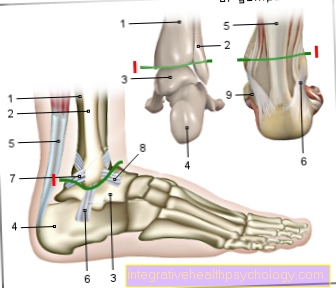

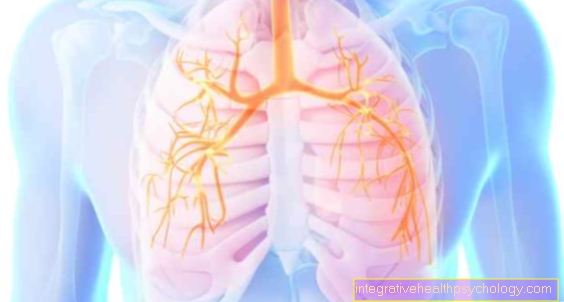
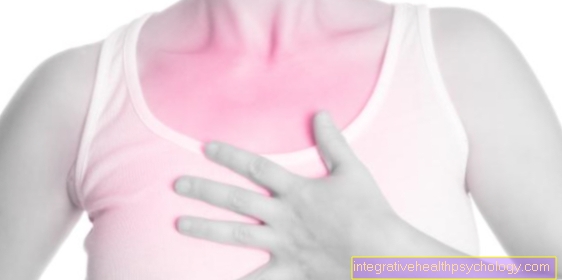
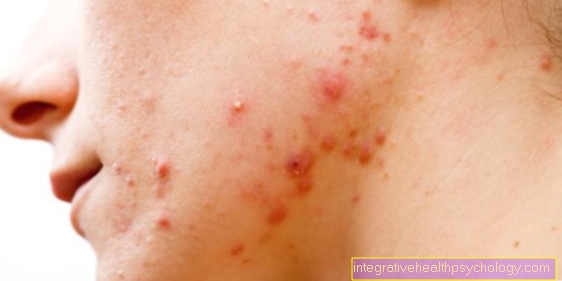

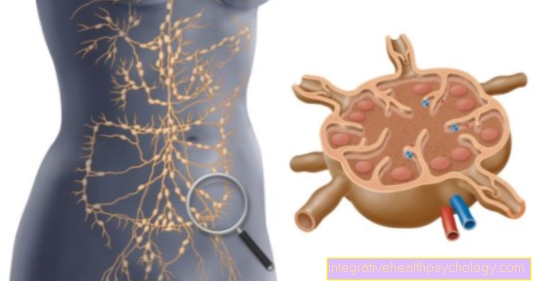
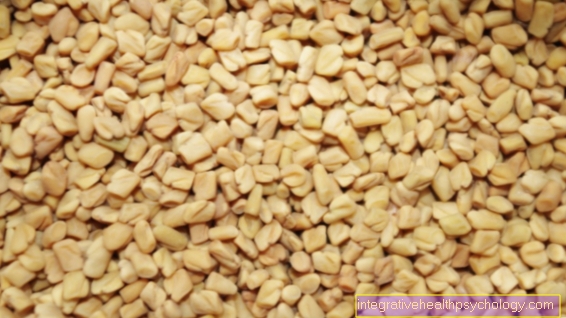






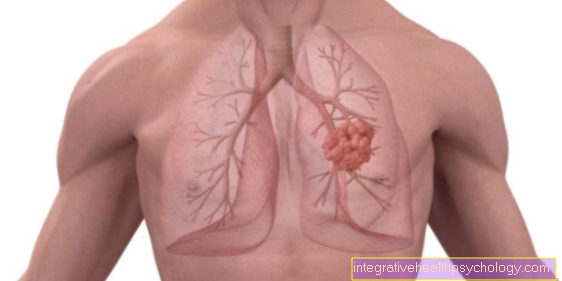


.jpg)



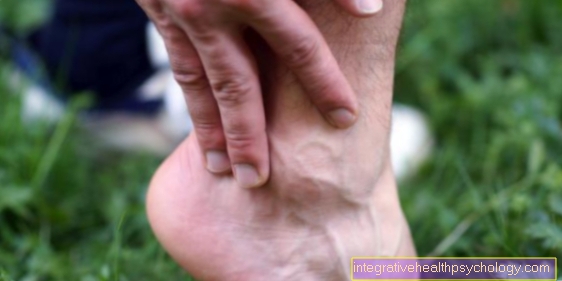

.jpg)



